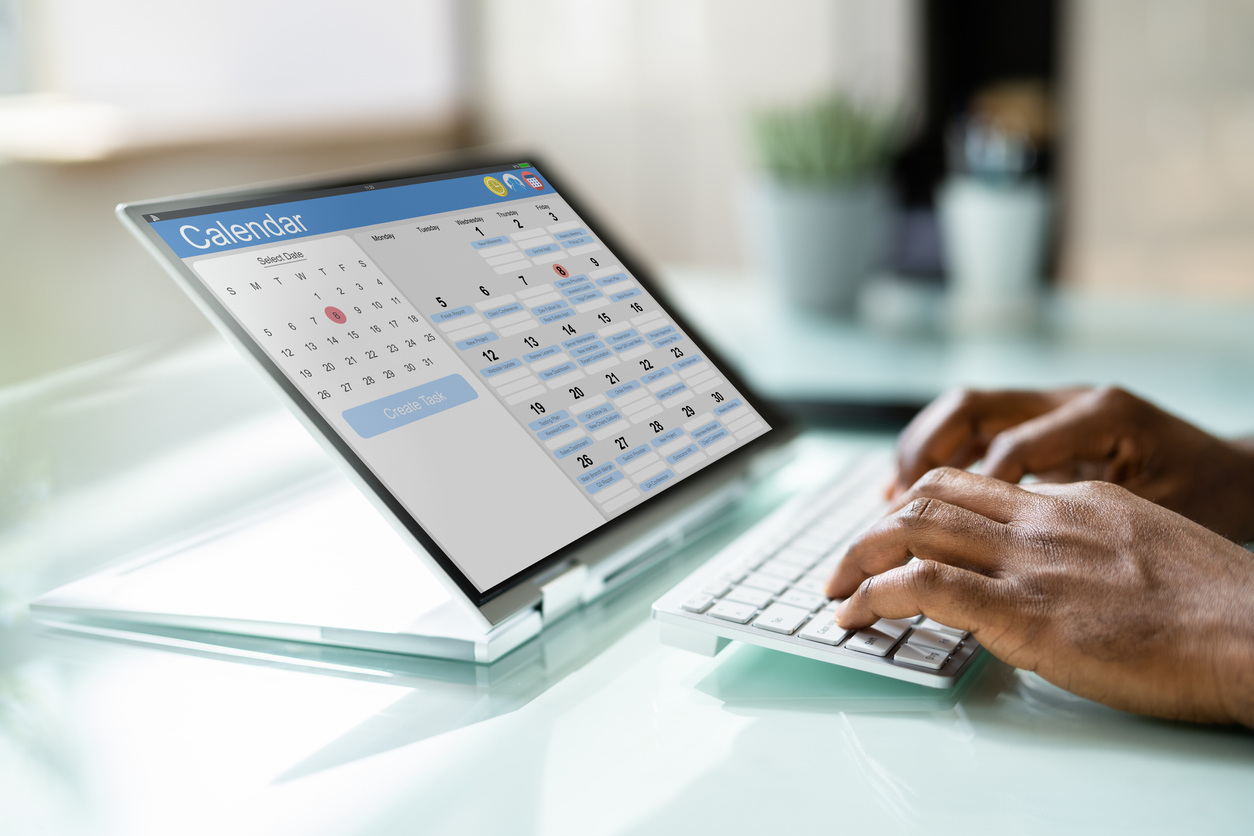
Think back to March 2020, when remote work was brand new and conversational generative AI was associated with the likes of science fiction.
Clearly, a lot has changed.
Work from home (WFH) and AI are the two big acronyms that have entered our vocabularies since the pandemic, and both bring their own opportunities and challenges for workplaces — but especially for their IT departments.
Securing and operating hybrid environments has brought about new challenges for IT departments as they strive to ensure seamless connectivity, productivity, and security for an increasingly dispersed workforce.
Fortunately, the emergence of AI has revolutionized IT operations, enabling organizations to unlock the full potential of hybrid work.
AIT is our newest acronym. Artificial intelligence-powered IT is the process by which routine IT tasks are automated, ticket resolutions are lightning-fast, and the collective expertise of AI and human IT professionals combines to create streamlined IT experiences.
When AI enters IT strategies, anything from automated ticket summaries to auto-generated user responses becomes possible.
This vision is quickly becoming a reality and proving to be the newest solution for IT pros to keep up with the increased demands of hybrid environments.
Hybrid work amplifies challenges for IT teams
Operating and securing hybrid environments is anything but simple.
When a workforce is hybrid, the IT management system migrates away from centralized infrastructures and becomes a network of disparate parts.
Atera’s recent research report found that 31% of remote or hybrid employees admit that working remotely increases their risk of IT issues.
This is further complicated by the fact that 50% of hybrid workers admit they are more likely to use their own personal devices instead of work-issued hardware when working remotely, which puts employees at a higher risk of falling victim to phishing and cyber threats. Hybrid work may mean less commuting time, but as a result, it means more IT complexity.
In fact, 66% of American IT professionals agreed it is harder to take days off than colleagues who are not in the IT department, which has severe implications for burnout, employee retention, and overall satisfaction.
In short, the evidence is clear: hybrid work requires that IT professionals do more to set up, operate, and secure their ecosystems.
Limitations of legacy IT solutions
The world has changed with hybrid work, but has the IT solutions market kept up?
Operating a hybrid environment means IT departments need a solution for everything from remote access capabilities to cybersecurity software. IT professionals have become hybrid professional jugglers and firefighters, bouncing between platforms just to solve one problem.
Traditional or legacy IT solutions have served organizations well in the past, but they have limitations in the context of hybrid work environments. One major drawback is their lack of scalability. Legacy IT infrastructure often struggles to handle the increased demands of a dispersed workforce, leading to performance issues and bottlenecks.
For instance, an IT technician must enter a ticket platform to identify a user problem. Then, they must jump to a remote monitoring & management (RMM) software for remote access and find a way to get the necessary script to resolve the problem.
Finally, they must return to the ticketing system to communicate with the end user. A seemingly simple problem, like a traditional password reset, becomes a 10-step process.
Additionally, legacy systems are typically rigid and inflexible, making it challenging to adapt to the dynamic needs of hybrid work. These solutions also require manual intervention for routine tasks, resulting in inefficiencies and increased workload for IT teams.
This could be manageable on a case-by-case basis. But, hybrid environments mean increased IT complexity. Ten steps to solve every problem means IT departments are less efficient and less effective.
IT efficiency refers to an organization’s ability to maximize the productivity and effectiveness of its IT resources, systems, and processes. It involves optimizing various aspects of IT operations to achieve desired outcomes such as streamlined workflows, reduced IT costs, improved performance, enhanced security, and increased innovation.
If IT departments are less efficient, it can lead to an increasing tech debt and a deprioritization of high-priority tasks like network optimization and security. Moreover, traditional IT solutions often lack the advanced security measures necessary to protect sensitive data in a hybrid work environment, leaving organizations vulnerable to cyber threats.
To overcome these limitations, organizations must embrace AIT solutions that offer scalability, flexibility, automation, and robust security measures to support the evolving needs of hybrid work.
Cloud-based RMM solutions for remote accessibility
The first step in managing any remote workforce is guaranteeing remote access to IT technicians who can maintain visibility and access to vertices in a complicated network.
This takes shape through an RMM platform that gives technicians access to remote devices. To maintain security and efficiency across a hybrid network, RMMs must be cloud-based.
Cloud-based RMM solutions offer flexibility and accessibility, allowing IT professionals to monitor and manage their systems from any location with internet access. This remote accessibility is crucial for modern IT departments, especially in today’s distributed work environments where teams may be spread across multiple locations or working remotely.
Cloud-based RMM solutions offer flexibility and scalability, allowing organizations to easily expand or contract their monitoring capabilities based on their needs without the hassle of procuring and maintaining additional hardware or infrastructure.
This makes them an ideal choice for modern businesses looking to streamline their operations and stay ahead in today’s rapidly evolving technological landscape.
But traditional RMMs alone aren’t enough
Most IT professionals’ daily routine involves juggling multiple applications, from ticketing systems for issue identification to RMM tools for deeper insights, alongside various patch libraries and databases for solutions. This fragmented approach increases workload and mental fatigue, heightening the risk of burnout.
While traditional RMM solutions have been effective in managing IT infrastructure, they are no longer sufficient in the context of hybrid work. The complexity of hybrid work environments demands a more comprehensive and all-in-one solution.
RMM solutions typically focus on monitoring and managing devices and networks, but they often lack the capabilities to address the broader needs of hybrid work, such as collaboration, security, and employee experience.
An all-in-one solution combines the functionalities of RMMs with other essential capabilities, including helpdesk and reporting, seamlessly integrated into a single interface tailored to the technician’s needs.
This integrated approach provides organizations with a holistic view of their IT environment, enabling them to streamline operations, enhance collaboration, strengthen security, and even save on costs instead of subscribing to a plethora of redundant software.
By adopting an all-in-one solution, organizations can effectively manage the diverse aspects of hybrid work and ensure a seamless and productive experience for their employees.
The rise of AIT
We’ve established the powerful collaboration that exists between the cloud and RMMs. But there’s another perfect pair that can help IT professionals respond to their evolving needs — IT and AI. AI has revolutionized IT processes by introducing a new way of working that streamlines operations, enhances efficiency, and optimizes resource utilization.
It’s clear that AI has the potential to transform IT management, but many professionals have yet to fully embrace it. In fact, data from Atera exposes the gap between AI capabilities and actual usage, signaling potential areas of focus for evolving enterprise-IT strategies.
41%
of IT workers have not used AI for their jobs, as found in a survey of 7,000 IT technicians.
Source: Atera
Yet, those using AI found significant value, with 18% using generative AI for data analysis and reporting, 30% for optimized support/ticketing, and 11% for predictive maintenance.
The analysis shows that IT professionals are looking to AI to strategize disparate components of IT operations. However, as a whole, the industry is not yet leaning into how AI can bridge the gap.
Benefits of AIT
AIT has the power to transform the IT industry completely as we know it.
AI can be used for predictive analytics to anticipate IT system failures, provide self-service solutions for common help desk tickets, automate routine tasks such as software updates or network optimization, and optimize resource allocation within IT infrastructures. This allows IT professionals to focus on more complex tasks involving infrastructure, technical debt remediation, and other initiatives they don’t have the time for.
Additionally, organizations are likely to see their IT team’s satisfaction improve as less time is spent on menial tasks, empowering IT teams to proactively address emerging challenges, plan for future growth, and ensure the scalability of IT infrastructure.
AIT also has incredible potential to enable a more robust, predictive maintenance ecosystem. AI-driven predictive analytics can identify potential IT issues before they escalate into full-blown problems.
By proactively addressing these issues, organizations can prevent downtime and the need for users to submit tickets for resolution, ultimately reducing wait times for support services. This frees up time across the enterprise for both the technician and the end user.
Overcoming the challenges of AIT
Incredible potential is yet to be fully realized when RMMs, AI, and IT frameworks are deployed synchronously. However, this doesn’t come without challenges.
In the survey about AI usage mentioned above, technicians who did not use AI in their IT frameworks cited a few leading concerns.
When asked about the biggest perceived challenge in integrating AI-powered IT into their current workstreams, IT technicians expressed concern about the compatibility with existing systems, the cost of implementation, skills gaps, and data privacy concerns.
In hybrid work environments, the integration of AI offers numerous advantages across the organization, particularly for the IT team. Proactive planning and adoption of AIT are crucial to addressing IT challenges effectively and should be evaluated seriously in light of the pressure placed on IT professionals.
Future-proof your IT with AIT
The risk of burnout for IT professionals is significant: high demands, skill shortages, remote work challenges, siloed workflows, lack of resources, and constant learning requirements make their jobs all the more daunting. But AI can improve that outlook.
AIT plays a pivotal role in facilitating hybrid work environments by enabling automation, supporting remote support capabilities, and providing scalability to meet the demands of remote work settings.
Therefore, organizations should embrace AIT as a strategic tool to enhance operational efficiency and ensure the well-being of their IT workforce.
Ready to optimize your IT investments and maximize savings? Take a step towards smarter management with IT portfolio management.
Edited by Jigmee Bhutia





